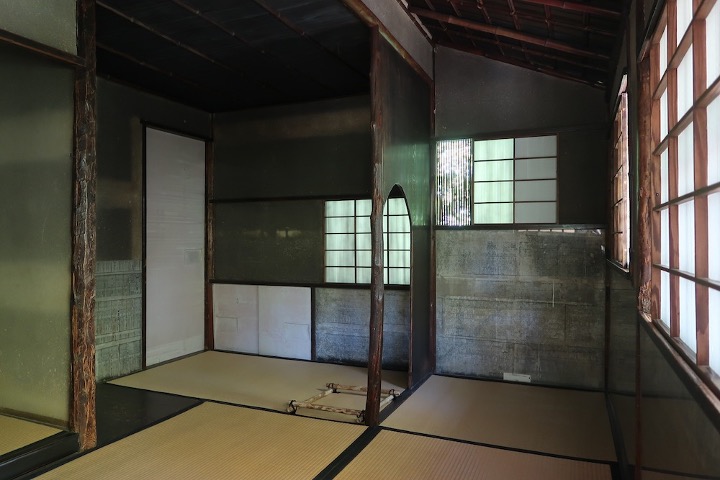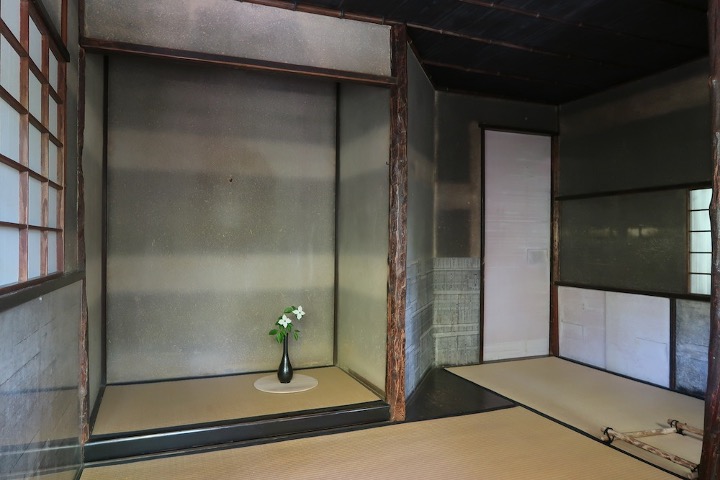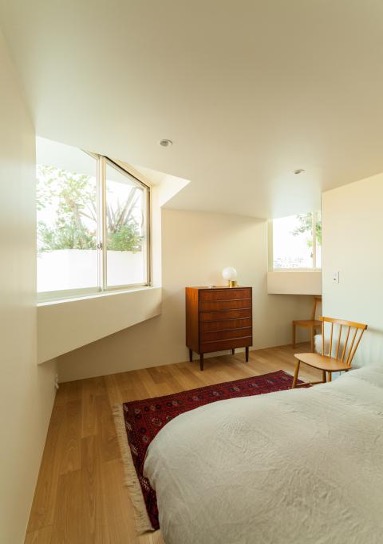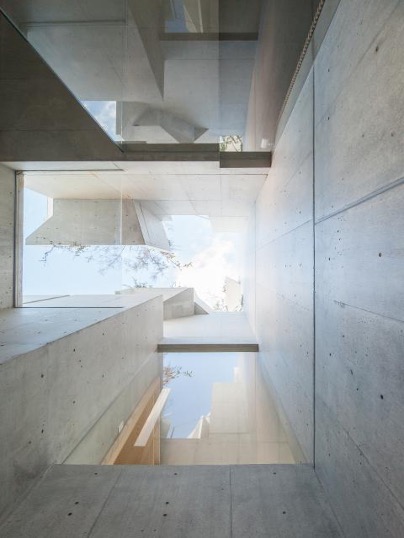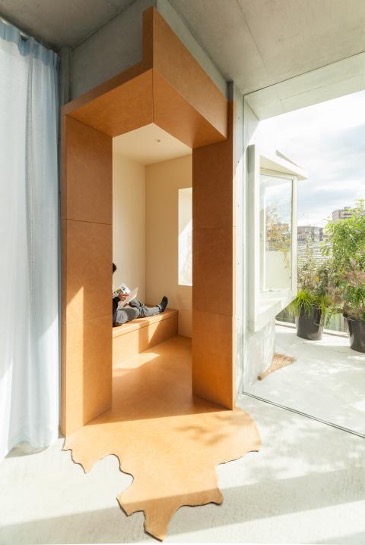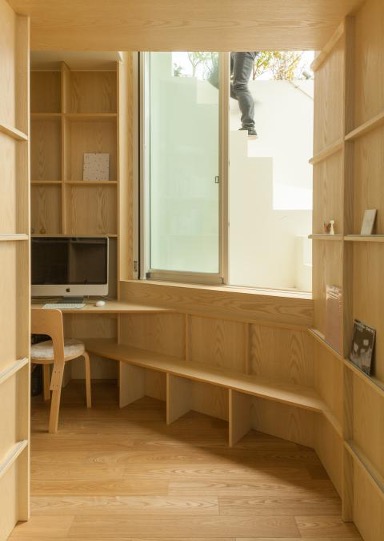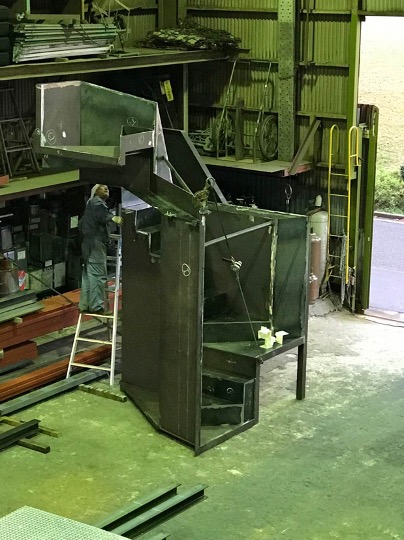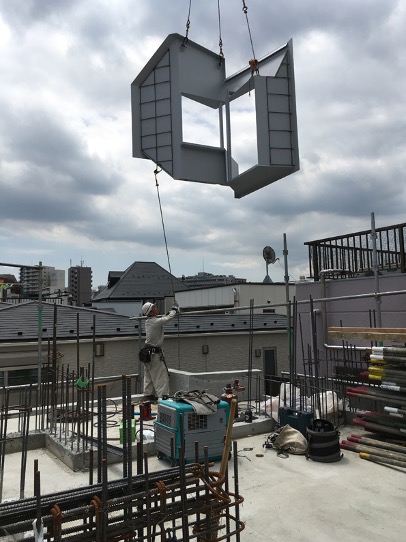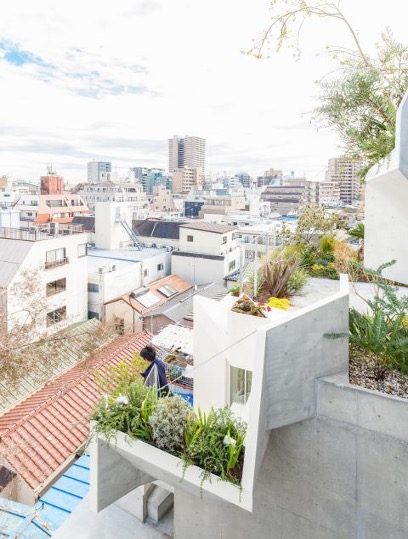Learning from Japan (Part one)
As we move more of our programming online, we thought we would revisit some of our past lectures, talks and discussions, that have taken place as part of our seasons on The Lesser Senses and Domesticity.
Our last event before lockdown was a talk with the Japanese architect Akihisa Hirata and Walmer Yard’s architect Peter Salter. Both speakers discussed one of their own housing projects in relation to craft, materiality and the interpretation of home.
Here we share an edited transcript of Akihisa Hirata’s lecture on his project Treeness House.
Akihisa Hirata: Japan-ness in Architecture
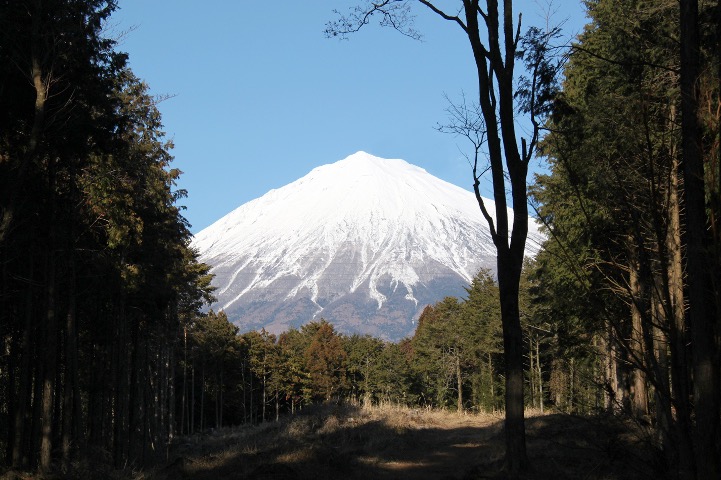
I’d like to begin with this picture, which shows a very ancient type of shrine beside Mount Fuji. In ancient times, there was no building – the void space is the shrine. The mountain is mystical, so the shrine doesn’t have to be a concrete building, but has to have some space to see the mountain. It shows the relationship between the natural and artificial in Japan.
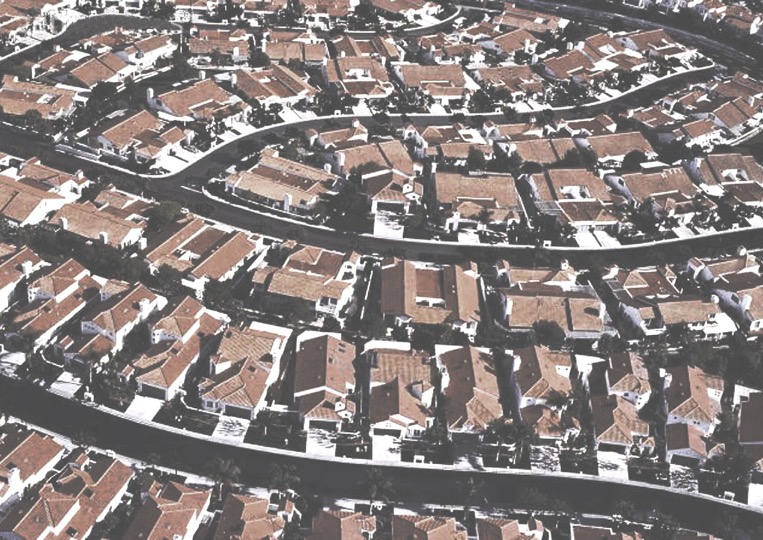

This is a picture from my book, which shows the roof, and the picture below shows the mountain. I think they are very similar to each other as the roof is made to make the water flow on the surface and then the mountain is made by the flow of rainwater. So, in a sense this mountain is the same as the roof. An architect thinks that they are designing the roof, but actually, what they are doing is part of nature. If you look down from the sky, the activities of human beings, are almost like the activity of a microorganism on the surface of the ground. It is like part of the natural movement. Thinking about these similarities between the natural and artificial, is very key to Japanese culture and there are some specific words which relate to it and are very striking to me. One is Shakkei, which means borrowed scenery.
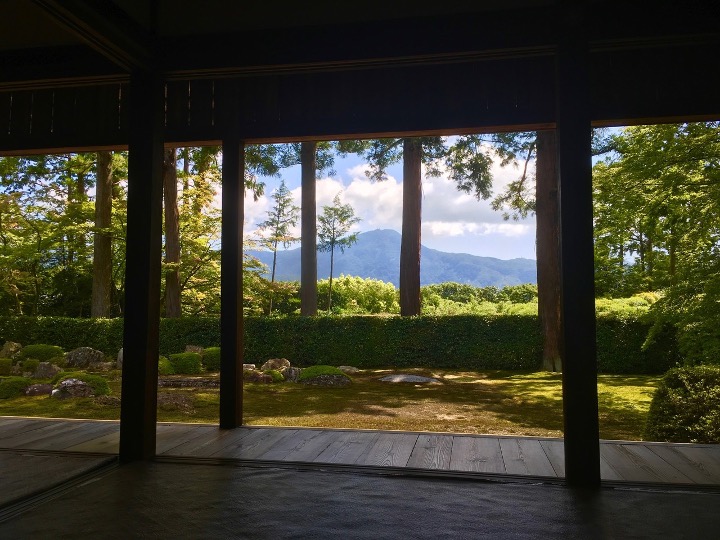
This is a photograph of the garden in the Entsuji temple, north of Kyoto designed by the ancient emperor Go-Mizuno. This garden is designed just to look at this mountain to the north of the city. It is very surprising because by making this view, the mountain – the natural thing – becomes almost artificial.
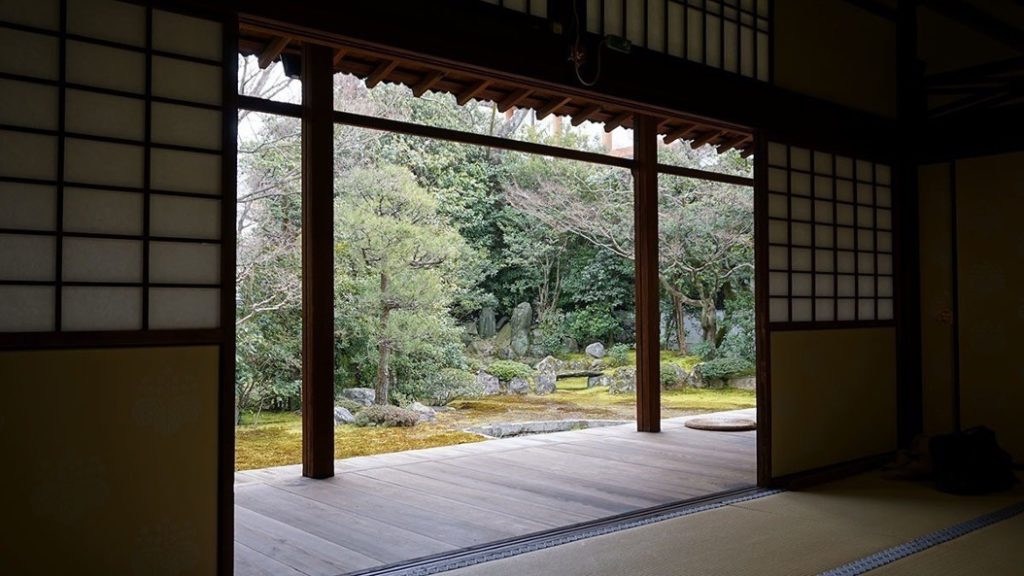
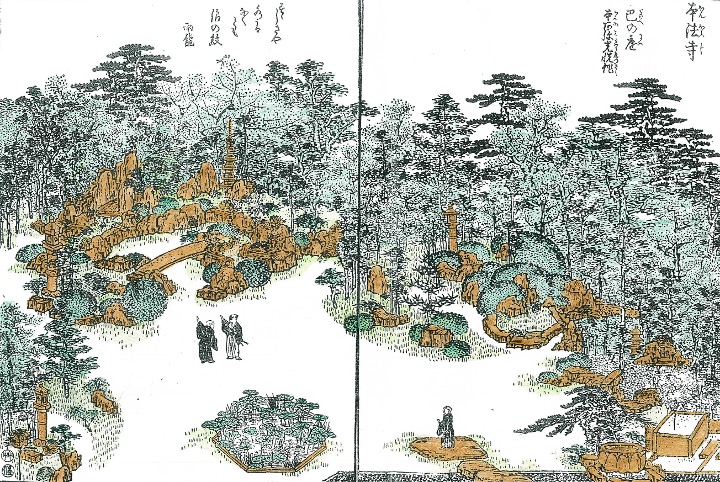
Another type of thinking about the Japanese garden is inclusive order. The image above shows the Honpouji Tomoe Garden designed by Koetsu Honami. I visited this temple with some of my students at Kyoto University with the garden designer and he showed us how he designed this type of garden. He recommend that we throw the colour on the drawing only on the part where there was existing stone and by doing this we could see the structure of the garden. Even if the plants were changed or replaced by another plant in 100 to 300 years, still this garden would be the garden by Honami because the configuration of the stone makes the garden original.
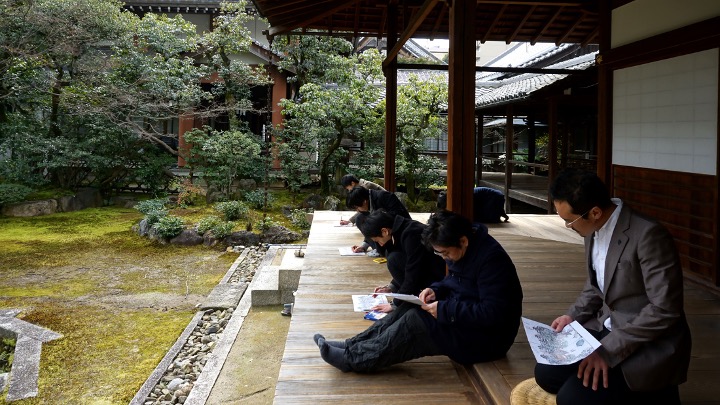
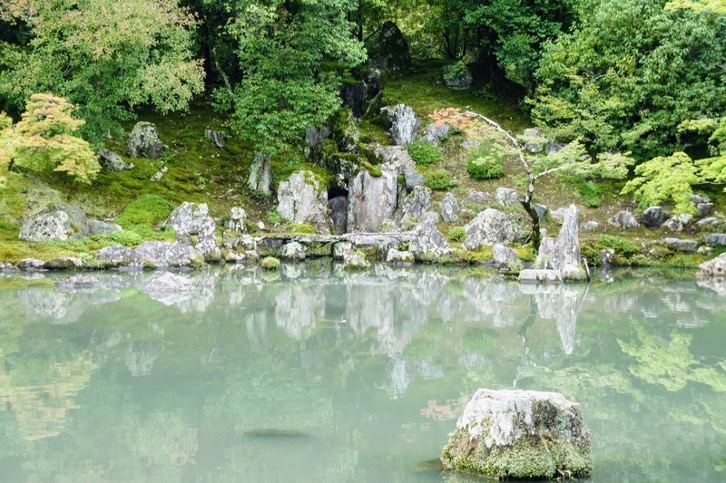
This type of structure is seen in many gardens in Japan. The photograph above is of the Saihoji Temple Garden designed by Muso-soseki. The structure of the garden is made by the pond and the stones. Most of the grounds will be changed over a long time span but the main structure of the garden will still be there.

I think there are similarities between my architectural thinking and this Japanese garden thinking. The diagram above is from my book. It shows the fish roe tagging on the seaweed, and this seaweed is tagging on the ocean. There is a hierarchical system to this order. It is very architectural. Looking at this, it is almost like a rock in the garden and these smaller elements are like the plants or the moss of the garden. If we could use the structure of the architecture to make this type of order there would be an inclusiveness in the architecture. Making architecture is like making a garden.
The above photographs are of the typical Japanese teahouse – Joan, designed by Urakusai Oda. It shows the scale and savageness in the architecture of the Japanese tea house. It is very small – just 2m x 1m, with a height of 2.5m. But inside this small scale and limited space, we have many types of smaller scales and materials. And also, there are natural elements like trees and soil. So even though this tea house is sophisticated, there are elements which come from a savage situation. It makes the whole thing really interesting.
The main space is 2m x 2m and there is a fireplace where the master sits. There is a recessed space called the toko where decorative items are placed. People coming from the outside come through an entrance, which is called the nijiriguchi. This is really small – almost 1m lower in height and smaller than 1m x 1m. You have to crawl through it and it is like the visitor is being born when they enter.
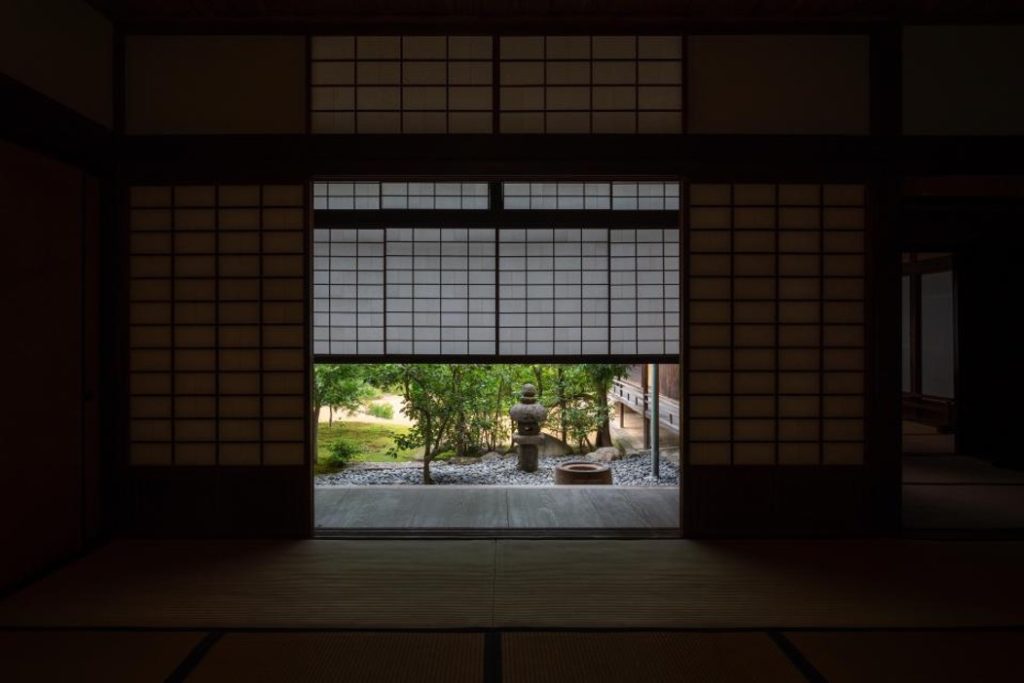
Another example of Japanese space is the intermediate area between interior and exterior, which is sometimes called angawa. It is an inbetween space – between the inside tatami space and the outside garden space. It is a floor which connects these two elements. In my architecture, I dream of making something like this angawa space. In traditional Japanese architecture it is a very two dimensional space and I am trying to make an inbetween space which is three-dimensional – like butterflies flying inbetween branches or flowers.
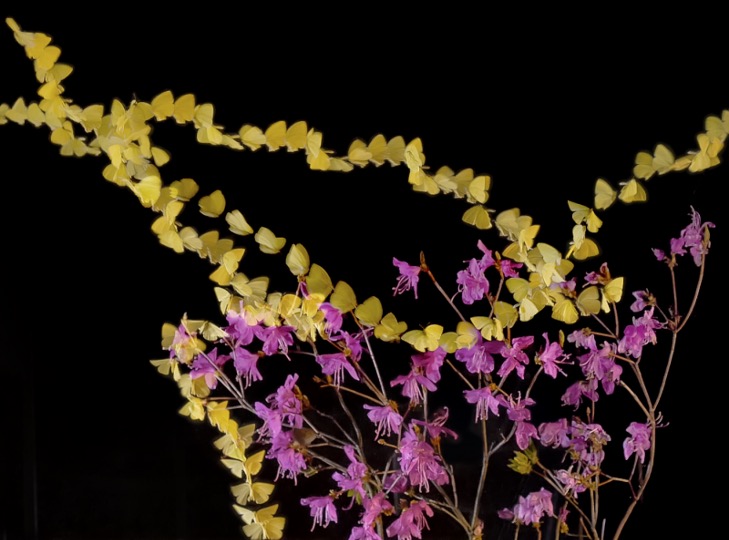
So these butterflies are flying, enjoying this type of inbetweenness.
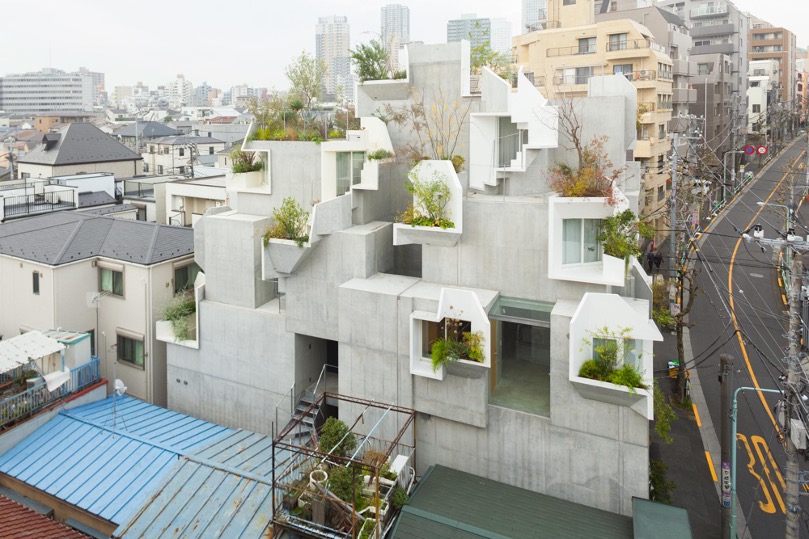
What I was trying to do in Treeness House was to make it as if the occupant is flying inbetween the flowers in a three-dimensional garden.

The word ‘Treeness’ comes from the three sides of the project – the trunk, then the branches and the leaves. I tried to combine these three different types of order in a hierarchical way and in a way suited to the urban situation.
This house and gallery is situated in the downtown area in Tokyo. The ground floor consists of rock-like elements which are boxy, concrete shapes. The gallery itself is a 6m x 6m x6m box that can be connected by a large door to the void space and the outside.
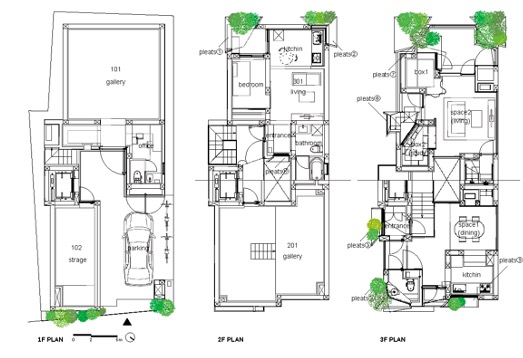
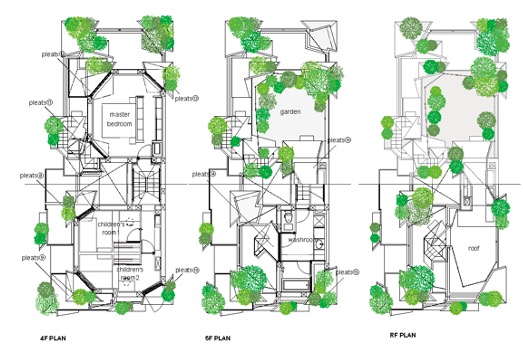
As you move up the floors of the building it gradually incorporates more natural elements with a mixture of inside and outside space.
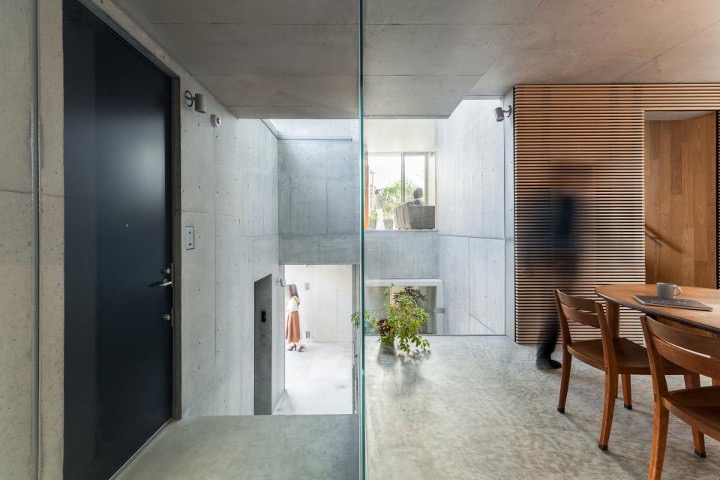
The photograph above shows this mix of indoor and outdoor spaces. The dining room is in the front and then we see the living room in the distance but inbetween these two spaces there is a void which faces onto greenery. It is a bit similar to the scale of the teahouse where you can sit in an intimate way and spend time in a private space.
I was looking at the idea of using pleats in architecture and I adapted the pleated geometry to create the windows of Treeness House. There are 17 different types of pleated windows. They were made by using 9mm-thick steel panels welded together, and were made in a factory and then brought to site and connected to the concrete base.
The scenery of Tokyo has a flow of grand buildings and smaller buildings almost like a forest. I think it is really interesting that this three-dimensional house adds to the continuity of this scenery.
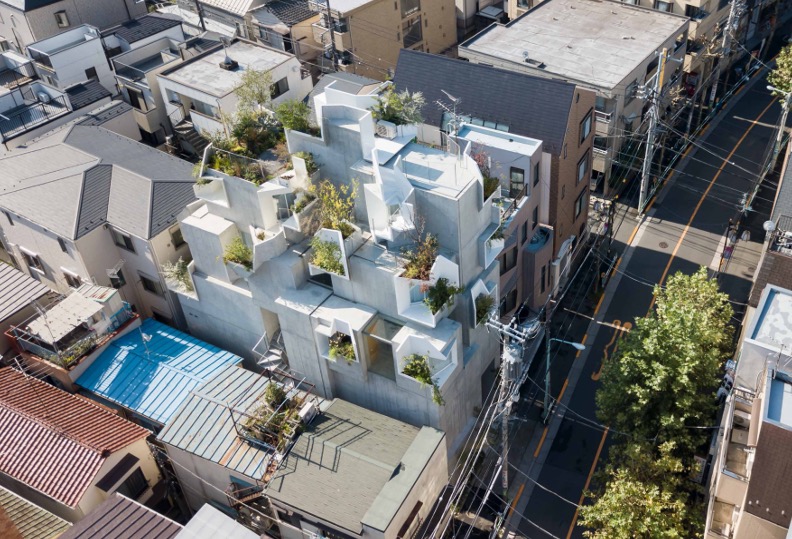
Dialogue: Hirata and Salter was originally held at Walmer Yard on 21 February 2020. Part two, which will be Peter Salter’s lecture, will be published later this week.
